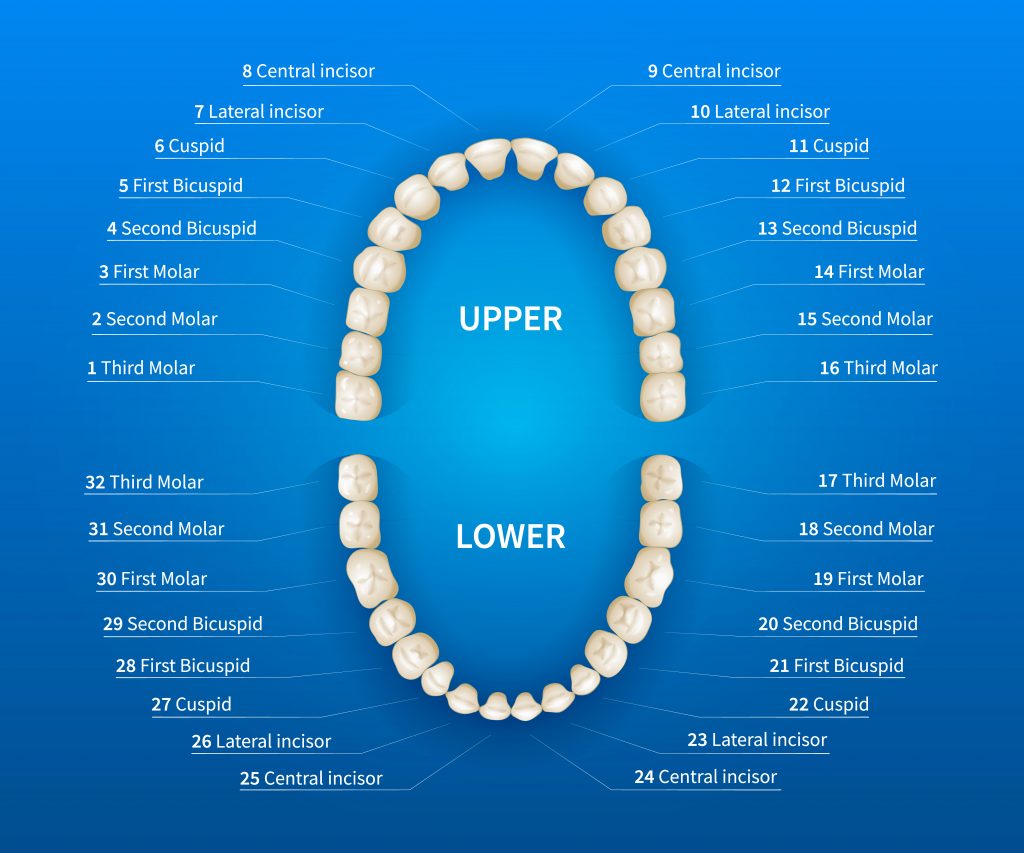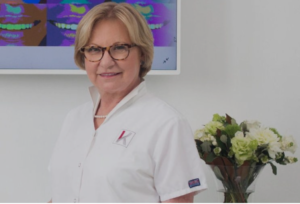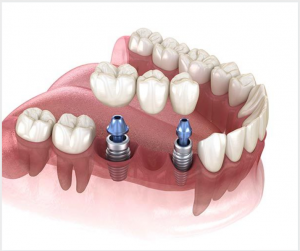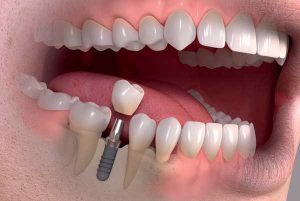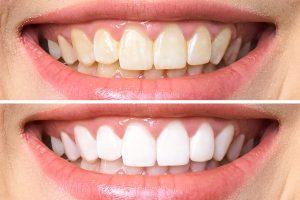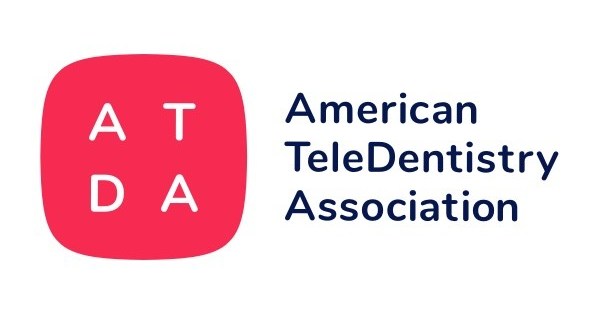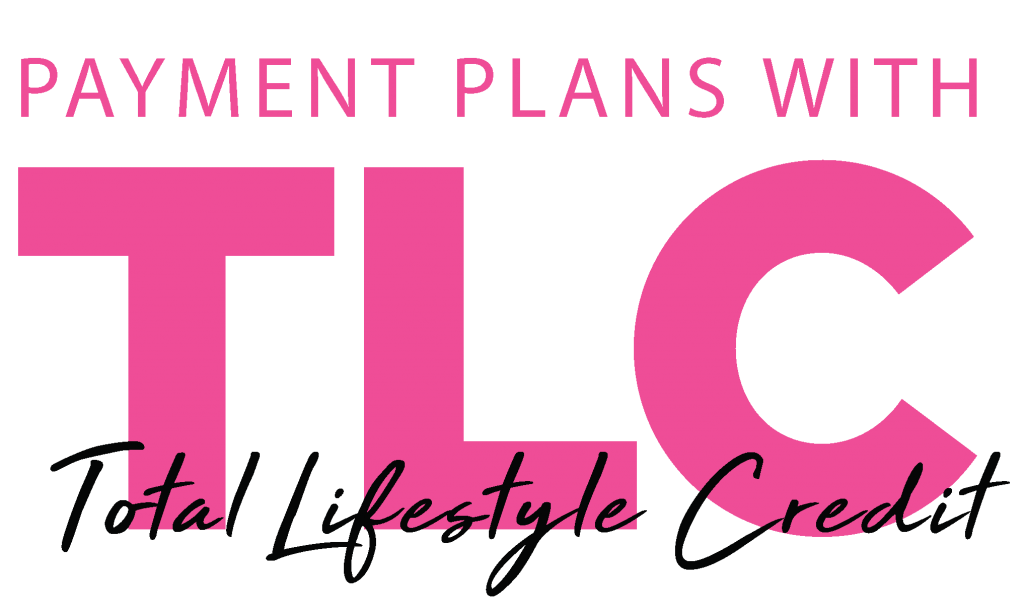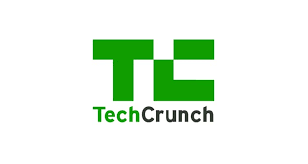Teeth numbering is often confusing for many patients who travel overseas as the teeth numbering varies in different parts of the world. However, there are three most common numbering systems.
Teeth numbering is a terminology used within the dental industry to communicate the identity and position of teeth. Dentists maintain patients’ records of tooth conditions based on these numbers. Sometimes, these numbers are spoken aloud during an examination, and often patients have no idea what all these numbers mean. These numbers become more confusing for patients who are looking to communicate with overseas dental clinics. So let’s dive deeper into different types of teeth numbering systems and what it all means?
Universal Teeth Numbering System In Adult Dentition
A teeth numbering system was first used in 1882 by Dr. Julius Parreidt, a German Dentist. Under this naming system, primary and permanent teeth are named differently. This is a very simple system that was adopted by the American Dental Association and is the most common teeth numbering system used by Dentists in the USA as well as dental insurance companies. It is simple, because, it follows a natural sequence that can easily be taught to patients and new people entering the field of dentistry.
Because there are 32 teeth in the mouth including the wisdom teeth, the Universal teeth numbering system begins with the very last molar on the upper right, ( Tooth No. 1 ), and it completes the upper jaw with the last molar on the upper left ( Tooth No. 16). Then the last molar on the lower left is counted ( Tooth Number 17 ) and, it follows the sequence similar to the upper jaw finishing with the last molar tooth in the lower right ( tooth Number 32 ).
The 32 teeth are divided into 4 Quadrants of 8 teeth each and each quadrant is designated as:
- Upper Right Quadrant ( Teeth Number 1- 8 )
- Upper Left Quadrant (Teeth Number 9- 16)
- Lower Left Quadrant ( Teeth Number 17- 24)
- Lower Right Quadrant ( Teeth Number 25-32)
Universal Teeth Numbering System In Baby Teeth ( Primary Dentition )
Baby teeth numbering is slightly different than adult teeth. The total number of baby teeth by the end of age two is 20. To avoid confusion with adult permanent teeth, baby teeth are designated by letters A-T. The diagram below shows the teeth numbering system for both Adult and Baby teeth under the Universal teeth Numbering System.
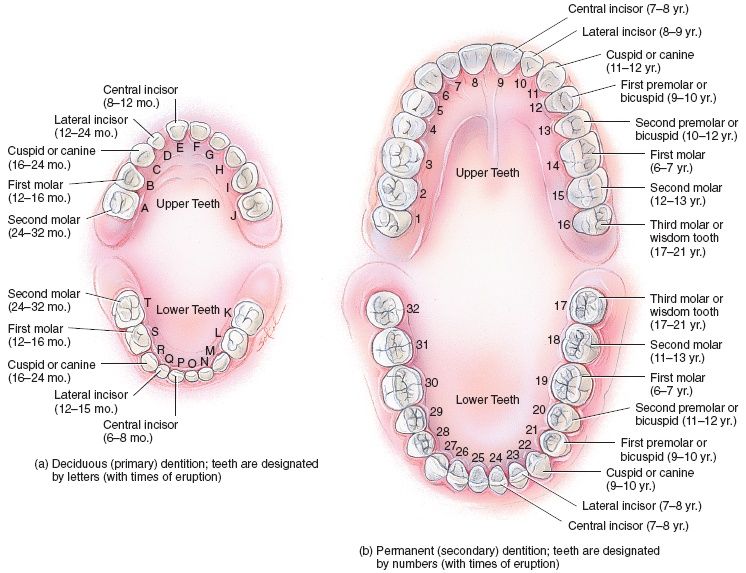
FDI Teeth Numbering System
FDI stands for (Federation Dentaire Internationale). The teeth numbering system is based on a double-digit designation for adult teeth and the baby ( primary ) teeth.
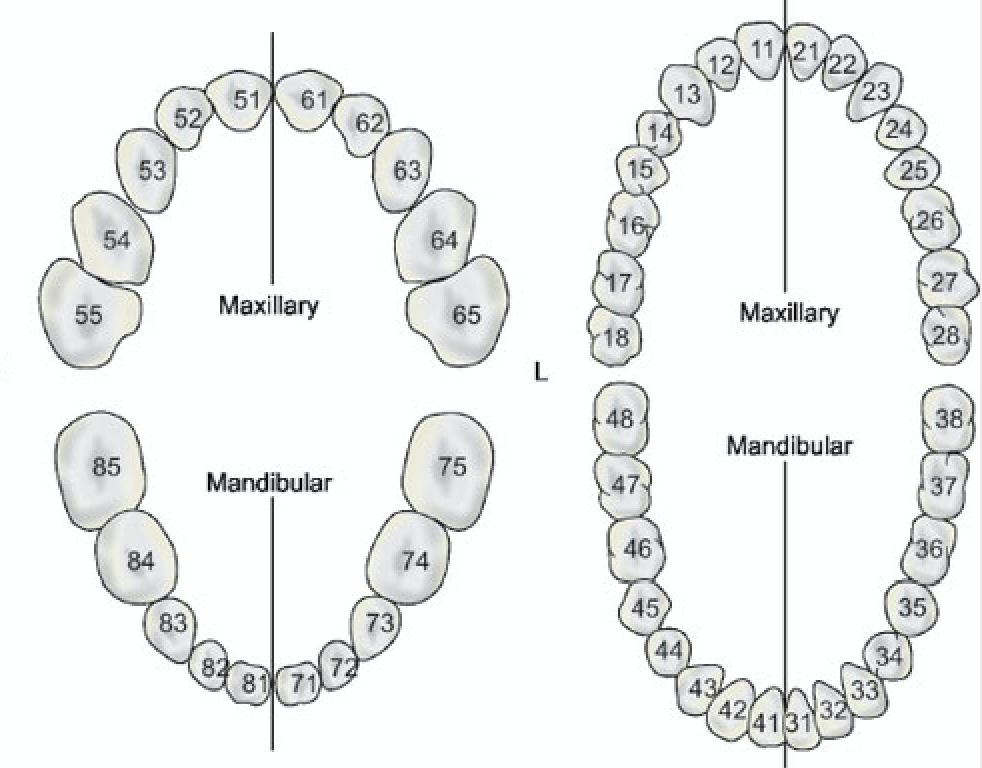
In the FDI teeth numbering, similar to the Universal system, the teeth are categorized into four quadrants. However, each quadrant is designated a number showing as a prefix, following, the tooth number. In contrast with the Universal teeth numbering, Teeth Number 1 are the Central Incisors and Teeth Number 8 are the last (third) molars.
For primary teeth, instead of using letters, in the FDI teeth numbering, teeth Number 1-5 is used, with tooth number 1 being the central incisors and the 5, the last baby molar teeth.
FDI Teeth Numbering System and Quadrant Designation
Adult Teeth
- Upper Right Quadrant is assigned (1)
- Upper Left Quadrant is assigned (2)
- Lower Left Quadrant is assigned (3)
- Lower Right Quadrant is assigned (4)
Primary ( Baby ) Teeth
- Upper Right Quadrant is assigned (5)
- Upper Left Quadrant is assigned (6)
- Lower Left Quadrant is assigned (7)
- Lower Right Quadrant is assigned (8)
Therefore, the upper right central incisor is referred to as 11 and the upper left central incisor is referred to as 21, and so on.
Palmer Teeth Numbering System
The Palmer teeth numbering system is a less common but still used teeth numbering system, commonly used in the United Kingdom and those dentists trained in the UK. The system uses a bracket symbol to illustrate where the tooth belongs on the chart. It is a single-digit teeth numbering system and follows the same sequence as the adult teeth in FDI. However, it uses A-E, instead of 1-5 that is used in the FDI system.
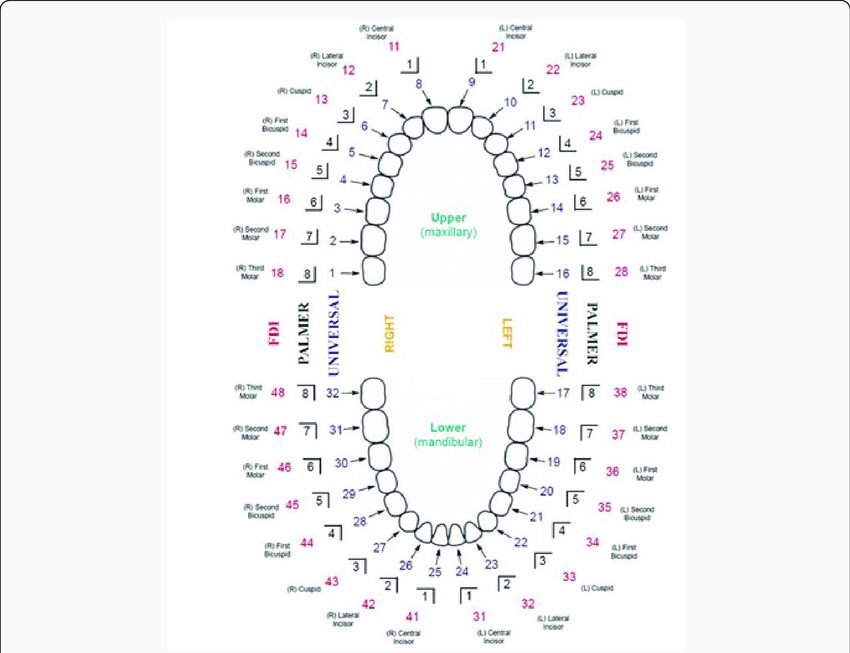
Teeth Numbering Conversion Chart
| Tooth | Universal | FDI | Palmer |
| Upper Right Quadrant | URQ | 1 | UR |
| Upper Right 3rd Molar | 1 | 11 | UR1 |
| Upper Right 2nd Molar | 2 | 12 | UR2 |
| Upper Right 1st Molar | 3 | 13 | UR3 |
| Upper Right 2nd Pre-Molar | 4 | 14 | UR4 |
| Upper Right 1st Pre-Molar | 5 | 15 | UR5 |
| Upper Right Canine | 6 | 16 | UR6 |
| Upper Right Lateral Incisor | 7 | 17 | UR7 |
| Upper Right Central Incisor | 8 | 18 | UR8 |
| Upper Left Quadrant | ULQ | 2 | UL |
| Upper Right Central Incisor | 9 | 21 | UL1 |
| Upper Right Lateral Incisor | 10 | 22 | U2 |
| Upper Right Canine | 11 | 23 | UL3 |
| Upper Right 1st Pre-Molar | 12 | 24 | UL4 |
| Upper Right 2nd Pre-Molar | 13 | 25 | UL5 |
| Upper Right 1st Molar | 14 | 26 | UL6 |
| Upper Right 2nd Molar | 15 | 27 | UL7 |
| Upper Right 3rd Molar | 16 | 28 | UL8 |
| Lower Left Quadrant | LLQ | 3 | LL |
| Lower Left 3rd Molar | 17 | 38 | LL8 |
| Lower Left 2nd Molar | 18 | 37 | LL7 |
| Lower Left 1st Molar | 19 | 36 | LL6 |
| Lower Left 2nd Pre-Molar | 20 | 35 | LL5 |
| Lower Left 1st Pre-Molar | 21 | 34 | LL4 |
| Lower Left Canine | 22 | 33 | LL3 |
| Lower Left Lateral Incisor | 23 | 32 | LL2 |
| Lower Left Central Incisor | 24 | 31 | LL1 |
| Lower Right Quadrant | LRQ | 4 | LR |
| Lower Right Central Incisor | 25 | 41 | LR1 |
| Lower Right Lateral Incisor | 26 | 42 | LR2 |
| Lower Right Canine | 27 | 43 | LR3 |
| Lower Right 1st Pre-Molar | 28 | 44 | LR4 |
| Lower Right 2nd Pre-Molar | 29 | 45 | LR5 |
| Lower Right 1st Molar | 30 | 46 | LR6 |
| Lower Right 2nd Molar | 31 | 47 | LR7 |
| Lower Right 3rd Molar | 32 | 48 | LR8 |
| Countries | USA, Mexico | Canada, Australia, Singapore, Thailand | UK, Japan, Jordan |







